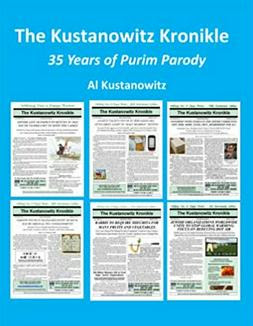We love weddings! And especially Chassidishe weddings. Of course, there's no chance that we would ever be invited to one. But thanks to the internet, we can be a fly on the wall at some of the grandest weddings ever produced.
Last November we reported on the huge Klausenberger-Sanz wedding in Israel, with 10,000 guests, and lots of food including 1.2 tons of carp.
Just two days ago the daughter of the Bobover Rebbe was married at a wedding in Brooklyn. Thousands of Chassidim attended, and a few of them were thoughtful enough to carry a video camera. Yesterday excerpts from the wedding appeared on the internet, on YouTube and some of the Chassidic web sites.
A highlight of a Chassidic wedding is the Mitzvah Tantz, a slow dance with male relatives of the bride dancing around the bride, standing like a statue in the middle of the room, connected only by a long white gartel.
So what's the Mitzvah Tantz all about? As Varda Branfman reminisces in an article in Jewishmag.com,
Why all of a sudden was I allowed to dance in front of the men? What kind of mitzvah could I get at the expense of doing something that is usually forbidden? I didn't understand, but I trusted the Rebbe.
The reason is that it is not a dance like any other dance. For one thing, the bride hardly moves. She just holds the gartel while the other end of the gartel is held by the one designated to dance with her. Her face is usually veiled. She stands in her veil and wedding gown like a luminous white vision. She knows that this is a good time for prayer like the time of Neilah on Yom Kippur, and her lips move behind the veil as she asks for a happy marriage, for children, a good life, and all the deepest prayers that are hidden in her heart.
The order of the dancers is significant: the uncles and brothers, the father-in-law, the father, and then last of all, the groom. A pathway to her new life is carefully laid as she dances with her father-in-law which gives way to the dance with the father who gives ultimate precedence to the groom who is the other half of her soul.
Here is the father taking his daughter's hands in his own and dancing with her, without the gartel in between them. They are allowed. This is after all his daughter. This is after all her father. The other dancers were close relations, but her father is much more. One's own child, one's own daughter. How to express the love they feel for each other now at the time when the nature of love becomes revealed?
This was a big wedding, and we'll be watching for more. But there are still two mysteries we haven't been able to solve. What's with the soldiers marching in 18th century costumes, and where are the women hiding? If you know, please share with our readers by making a comment. In the meantime, sing a little, dance a little, and enjoy!
















Yesterday excerpts from the wedding appeared on the internet, on YouTube and some of the Chassidic web wedding songs
ReplyDeleteThe "soldiers dancing" is a march prepared in honor of the chosson kallah, meant to entertain...
ReplyDeleteit is performed with practiced precision and quite fascinating to watch, actually.
The woman are off to the side behind a mechitzah...